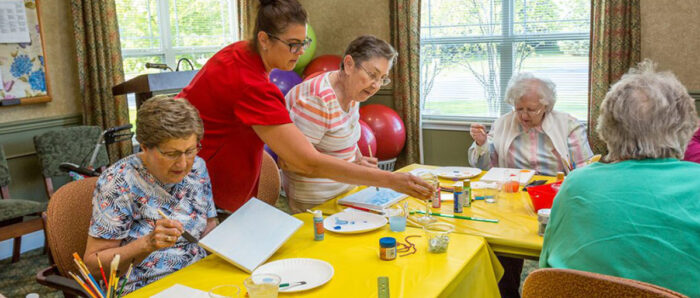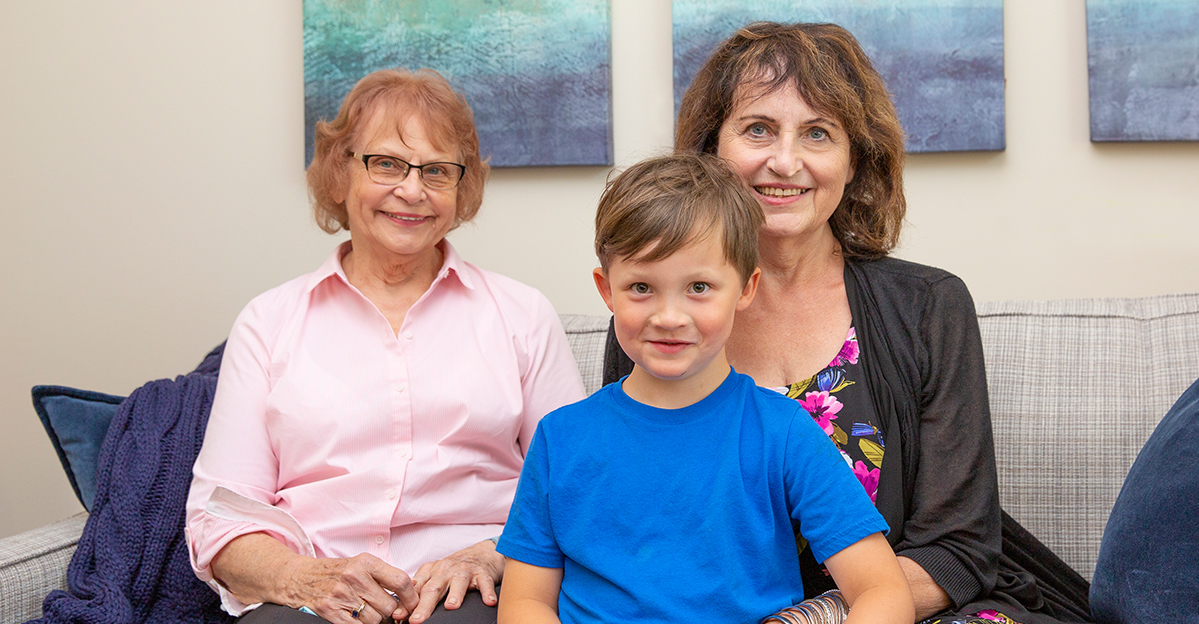As our parents get older, it’s natural for their needs to change. While caring for your loved one at home can be a truly rewarding experience, there may come a time when their needs go beyond what you’re able to provide. During these moments, it can be helpful to explore the different support services available.
In this blog, we’ll guide you through everything you need to know about care homes and how they compare to other senior living options — to help you make a confident and informed decision about your loved one’s future.
What Are Care Homes?
Care homes are typically family-style apartments that are equipped to support the needs of people who may no longer be able to live at home safely or independently, including older adults. In most cases, residents live in private or semi-private apartments, depending on their preferences and availability. While the size of care homes can vary, they’re usually smaller when compared to most senior living communities.
In a care home, residents usually receive a range of support services tailored to their needs. This often includes assistance with activities of daily living (ADLs), like bathing, dressing, and eating. Some care homes may offer assistance with medication management, but they’re usually not equipped to handle the needs of individuals who require regular or intensive medical care.
Benefits of Care Homes
When exploring living options for yourself or a loved one, it’s important to find a community that feels like home and provides the right level of support. Here are some of the key benefits offered by care homes:
- Home-Like Environment: Most care homes are designed to feel warm and inviting, resembling a traditional home. This cozy atmosphere can help residents feel safe and comfortable in their new surroundings.
- Affordability: While costs can vary depending on various key factors, care homes are typically more affordable compared to larger senior living communities or nursing homes. This makes them a great choice for families looking for quality support in a smaller, home-like setting.
- Personalized Assistance: Due to their smaller size, care homes often provide more one-on-one support. This personalized care can make residents feel more valued and supported in their daily routines. While larger communities may provide quality support for your family member, it may sometimes feel less personalized due to the higher number of residents.
- Safety and Security: Most care homes prioritize the safety of their residents with measures like secure entrances and emergency response systems. Additionally, trained caregivers are usually available around the clock to provide assistance when needed.
Drawbacks of Care Homes
Although care homes offer many benefits that can greatly improve your loved one’s quality of life, they may not be the right choice for everyone. Here are some reasons why care homes might not suit every senior:
- Reduced Sense of Independence: Most care homes usually have set schedules for meals, activities, and other daily activities. While many seniors may prefer the structured routine, some seniors can find it limiting, especially if they are used to making their own decisions or living independently.
- Cost Control: Care homes are often less costly compared to larger senior living communities. However, the expenses can add up quickly, especially if specialized care is needed.
- Limited Social Activities: Some care homes provide opportunities for residents to socialize and participate in activities, but these options may be limited due to the smaller number of residents. If social interaction or a wide variety of activities and programs are top priorities for your family member, this could be a downside to consider.
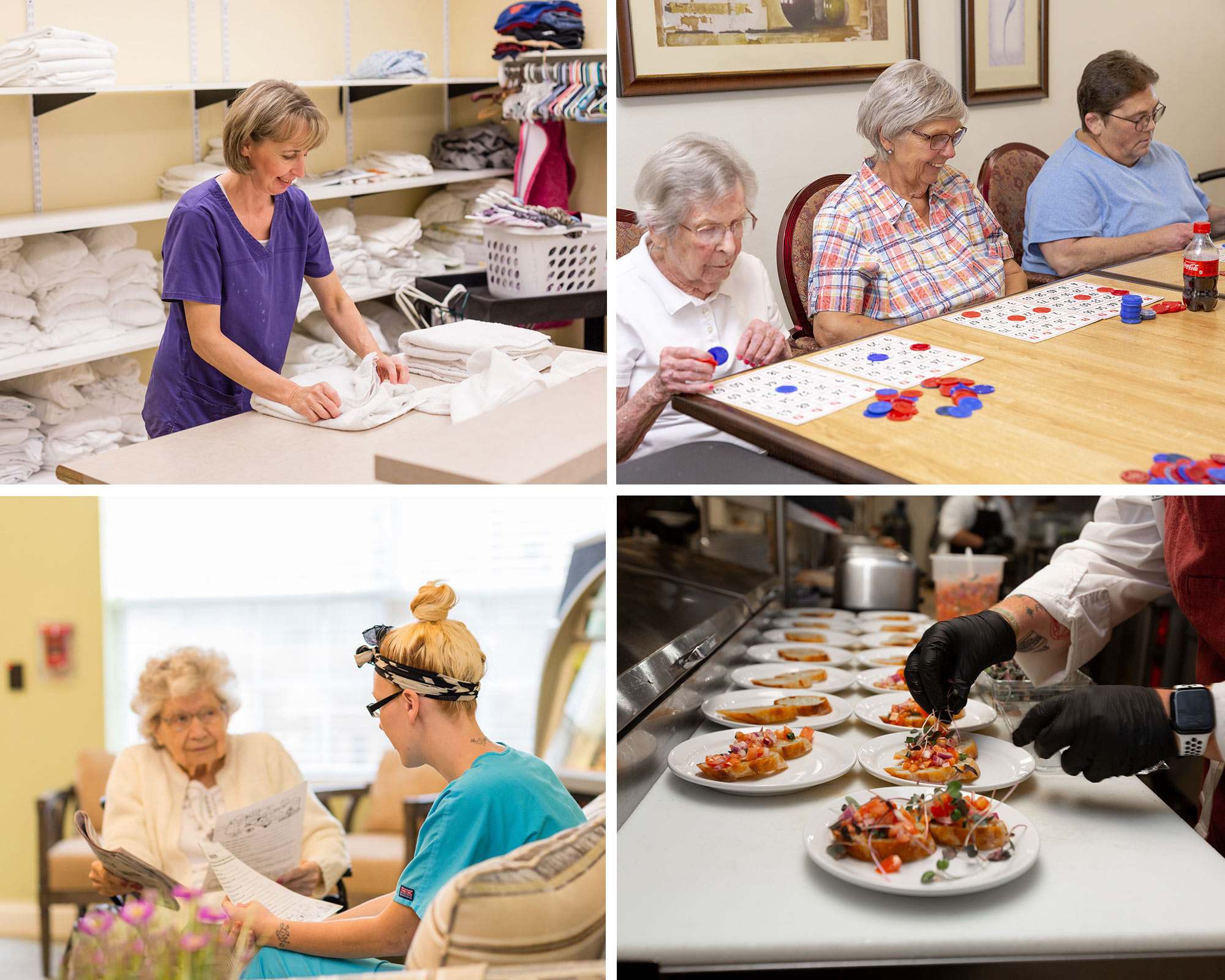
What Services Are Offered in Care Homes?
While each care home is unique, they typically offer a similar range of services to help support residents. Here’s an overview of the most common services provided in these homes:
- Personalized Care and Assistance: Residents in care homes often receive assistance with activities of daily living (ADLs), including bathing, dressing, grooming, and using the bathroom.
- Meal Preparation and Dining: In many care homes, residents enjoy freshly prepared meals together in a communal dining area.
- Housekeeping and Laundry: Employees in care homes usually provide assistance with cleaning, laundry, and maintenance services to help make residents’ lives more comfortable.
- Social Activities and Recreation: Some care homes may organize group activities, like games, crafts, or light exercises, to keep residents active and engaged. These activities can make residents feel connected and help combat feelings of loneliness and isolation.
- Transportation Services: Many care homes for seniors provide transportation to and from doctor’s appointments, shopping, or social outings.
Care Homes Compared to Other Services
When deciding on the best living option for yourself or a loved one, it can be helpful to understand how care homes differ from other senior living options. Let’s explore how care homes compare to some common alternatives:
- In-Home Care: In-home care allows seniors to stay in the comfort of their own homes while receiving support with activities of daily living (ADLs) or medical needs. This option often provides personalized, one-on-one attention. However, the costs can add up quickly, especially if your loved one requires round-the-clock care. For seniors who need ongoing assistance throughout the day, a care home may be a more cost-effective alternative.
- Senior Living Communities: Senior living communities and care homes both support residents with different needs but in distinct ways. Care homes for seniors are usually small, residential-style homes and typically accommodate four to 10 residents. Senior living communities, in contrast, are much larger, often housing dozens or even hundreds of residents. Most senior living communities resemble small neighborhoods, with access to private or semi-private apartments, shared dining areas, and activity spaces.
- Skilled Nursing: Skilled nursing communities provide short-term support, often for individuals recovering from surgery or receiving treatments like wound care or physical therapy. Most skilled nursing communities have a team of doctors, nurses, and therapists who provide specialized care on-site. Care homes, on the other hand, focus more on providing assistance with activities of daily living (ADLs) and often do not offer the same level of medical services as skilled nursing communities.
- Nursing Homes: Nursing homes provide long-term support for individuals with complex medical needs, such as chronic illnesses or other health conditions. They typically offer assistance with activities of daily living (ADLs) along with 24/7 medical support, which often makes them more costly. In contrast, care homes focus more on supporting residents with activities of daily living (ADLs) in a cozy, home-like setting. While some care homes offer some medical assistance, they are usually not equipped to provide intensive medical care.
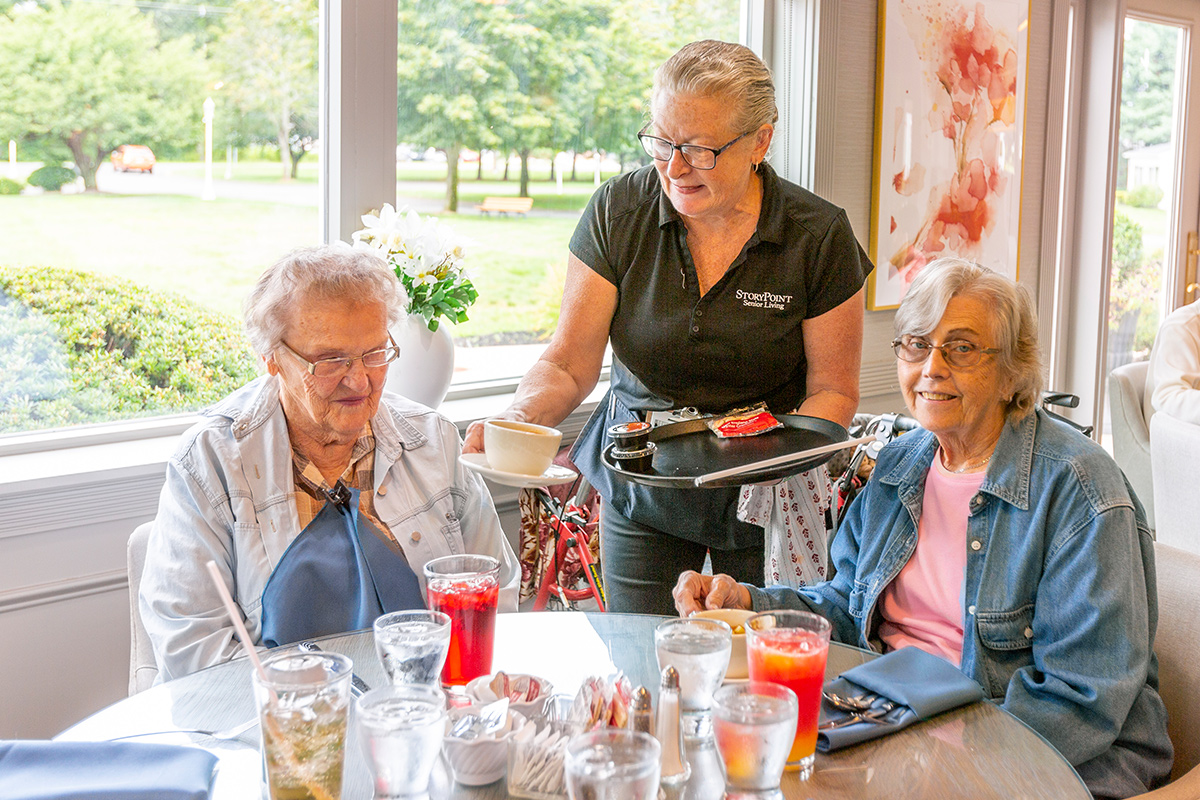
Costs of Care Homes and Payment Options
The cost of living in a care home varies depending on location, the level of care needed, and the amenities offered. On average, care homes in the U.S. cost between $3,000 and $5,000 per month, but for specialized support, costs can go higher. This price typically covers essential services like housing, meals, personal care, and housekeeping. However, it’s generally a good idea to ask about what’s included and whether there are any extra fees for services like medication management or transportation.
Paying for a care home can be a big financial commitment for many families. Thankfully, there are several options available to help manage the costs, including:
- Personal Savings or Income: Most people use personal savings, pensions, or retirement income to pay for care homes. For many families, this is usually the first source of funding for care home costs.
- Long-Term Care Insurance: Some long-term care insurance policies may cover part or even all of the care home costs. However, it’s important to review your loved one’s policy to understand exactly what’s covered.
- Medicaid: In some states, Medicaid can help pay for care home costs for those who qualify. Medicaid programs vary by state, so it’s important to check the specific rules in your area.
- Veterans Benefits: Veterans and their spouses may be eligible for financial assistance through programs like the VA Aid and Attendance Benefit. In some cases, these benefits can help cover care home costs.
- Assistance From Family: Sometimes, families work together to pay for the costs of a care home. This might include siblings contributing financially or pooling resources to support their loved one.
- State and Local Assistance Programs: Some states and community programs offer programs to help seniors afford residential care. Consider researching local resources or talking to a social worker to explore what’s available in your area.
Senior Living Costs Compared to Care Homes
When choosing the right living arrangement for a loved one, budget is often a major consideration for many families. Our cost calculator is here to help you estimate the costs of different support services in your area so you can find the best option that suits your loved one’s needs and your budget. Keep in mind, though, that the final cost will depend on the specific community and the level of support your family member needs.
When to Consider a Care Home or Senior Living Community
Recognizing the signs that your parent needs additional support can make all the difference. Let’s look at some common signs that it may be time to consider your loved one’s living situation:
- Difficulty Managing Tasks: If your parent is finding it hard to keep up with activities of daily living (ADLs), like cooking, cleaning, or bathing, this could indicate they need more assistance.
- Health and Safety Concerns: Safety concerns, like forgetting to lock the door, leaving the stove on, or frequent falls, can become dangerous, especially if your loved one lives alone. Both care homes and senior living communities are designed to provide a safe and comfortable environment to help address these concerns.
- Medical Needs: Chronic illnesses or conditions like Alzheimer’s and dementia often require specialized care. If your loved one’s health needs have outgrown what you or home caregivers can provide, a specialized care home or senior living community with medical support may be essential.
- Increased Social Isolation: Loneliness and isolation are common concerns for many seniors. Most senior living communities provide plenty of enjoyable group activities and programs to help residents connect with others.
- Caregiver Fatigue: While caring for a parent can be a rewarding and fulfilling experience, the day-to-day demands of caregiving can become overwhelming, especially for inexperienced caregivers. If you or other family members are feeling emotionally or physically drained from trying to support your parent’s needs, a care home or senior living community can provide the right support.
How to Make a Decision
Finding the right support for yourself or a loved one is an important decision, and it’s natural to feel unsure about which is the best fit. The key is to focus on the unique needs, preferences, and priorities of your loved one or yourself. Here are some helpful steps to guide you through the decision-making process:
- Assess Care Needs: Ideally, you should start by assessing the level of support your family member requires. If your loved one needs regular assistance with activities of daily living (ADLs) like bathing, dressing, or medication management, a care home may be able to support these needs without the higher cost of a larger senior living community. For seniors who are more independent but need occasional support with tasks or access to amenities, a senior living community might be a better fit.
- Evaluate Social Preferences: Think about the social environment that would suit your family member best. If they prefer a quiet, home-like environment, a care home is a fantastic choice. For those who enjoy meeting new people, participating in group activities, and having access to a wide range of social opportunities, a senior living community may be a better choice.
- Consider Lifestyle and Amenities: It’s also a good idea to consider your loved one’s lifestyle and interests. If access to fitness centers, hobby classes, or a variety of culinary options are top priorities, a senior living community will likely meet those needs. If they prefer a simpler, homier environment, a care home might be more appropriate.
- Budget and Financial Planning: The next key step is to determine your budget and explore the pricing structures for both options. Care homes can be a cost-effective option for people who don’t need extensive amenities, while senior living communities may offer tiered pricing based on the level of support and services provided.
- Tour and Ask Questions: Before making a decision, it can be helpful to tour potential homes or communities in person to get a feel for the environment. This is a good chance to talk to employees, observe how they interact with residents, and ask any important questions you may have about the community.
- Involve Your Loved One: It’s always a good idea to involve your loved one in the decision-making process. After all, their preferences, comfort, and happiness are central to making the right choice. In addition, involving them in the decision-making process can help ensure they feel heard and supported during the transition process.
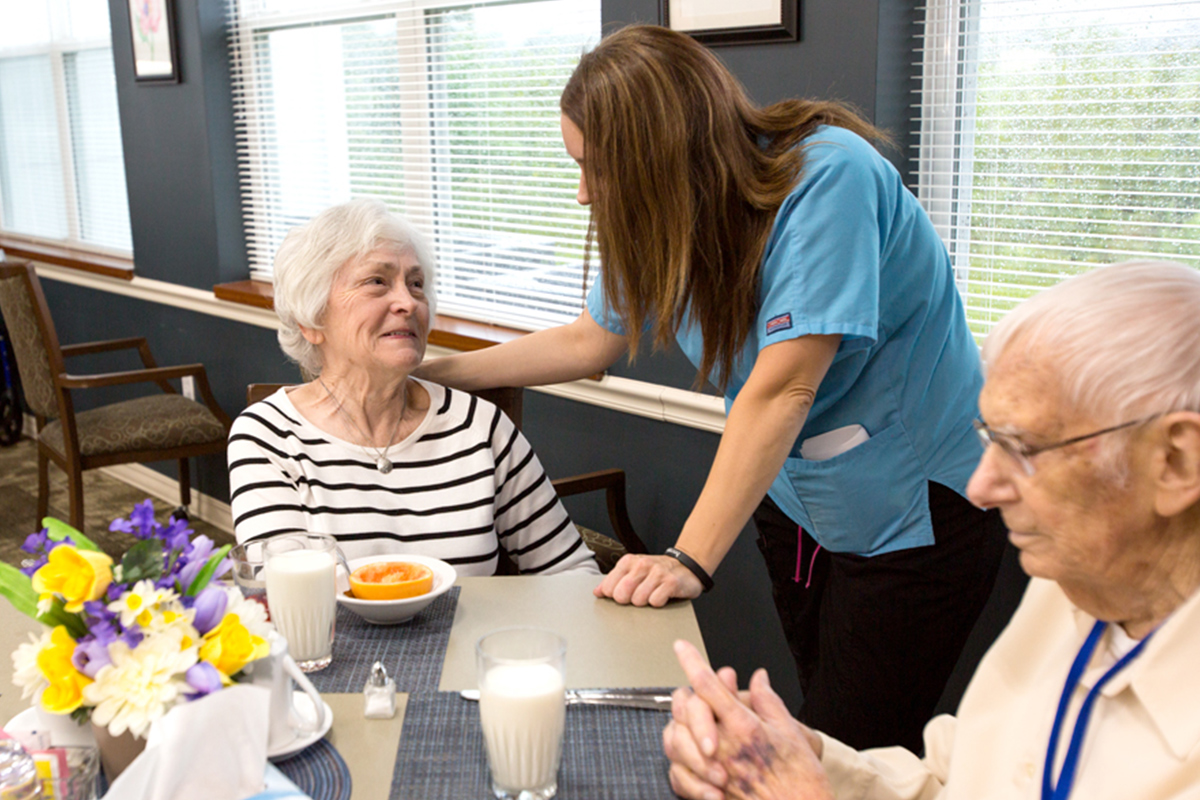
Tips on Making the Transition
Moving to a care home often means leaving behind familiar surroundings and routines, which can be an emotional and challenging process for many seniors. Adjusting to this new environment takes time, and it’s important to be patient and understanding with your loved one during this period. Here’s how you can offer the best support during this time:
- Stay Engaged and Connected: While a care home may support your loved one’s needs, it’s important to stay involved. Try to visit them regularly and participate in activities they enjoy. This can help them feel valued and connected as they get used to their new surroundings.
- Communicate With Caregivers: It’s generally a good idea to share any important information about your parent’s preferences, routines, and history. This can help ensure they receive personalized assistance and feel more at home.
- Encourage Community Programs: Many care homes offer social activities and group events that residents can enjoy. Taking part in these programs can provide great opportunities for socializing and help make the transition journey smoother.
Let StoryPoint Group Be Your Guide
At StoryPoint Group communities, we truly understand the love and effort it takes to care for your loved one. That’s why we’re here to support you every step of the way. If you have any questions about care homes or other senior living options, please reach out to us or call 1-844-275-9990. We look forward to connecting with you and helping you find the right next step.






